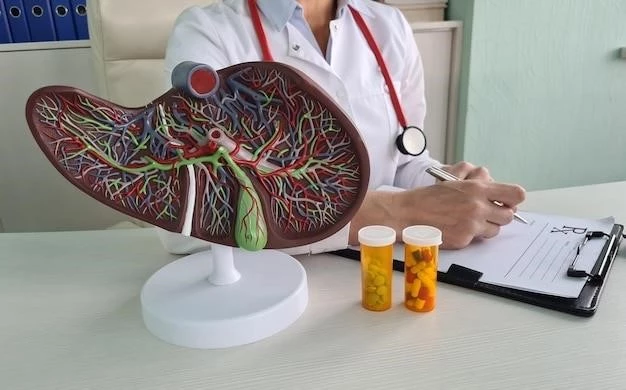Overview of X-linked Myopathy with Excessive Autophagy
The X-linked myopathy with excessive autophagy (XMEA) relates to the VMA21 gene causing autophagy failure, leading to muscle vacuolation and atrophy․
Definition of XMEA
X-linked myopathy with excessive autophagy (XMEA) is a rare inherited disease characterized by autophagy failure, resulting in progressive vacuolation and atrophy of skeletal muscles․ The condition is linked to pathogenic variants in the VMA21 gene, leading to aberrant accumulation of autophagic vacuoles․
Clinical and Genetic Characteristics
The X-linked myopathy with excessive autophagy (XMEA) is linked to the VMA21 gene٫ causing autophagy failure leading to muscle vacuolation and atrophy․
Pathogenic Variants in the VMA21 Gene
The presence of pathogenic variants in the VMA21 gene plays a crucial role in the development of X-linked myopathy with excessive autophagy (XMEA)․ These variants lead to impaired autophagy processes, resulting in the progressive vacuolation and atrophy of skeletal muscles observed in individuals affected by XMEA․
Histopathological Features of XMEA
The histopathological features of X-linked myopathy with excessive autophagy (XMEA) include the aberrant accumulation of autophagic vacuoles in skeletal muscle cells, leading to muscle atrophy and weakness․ These distinctive features are essential for the diagnosis and understanding of XMEA pathology․
Comparison with Autophagic Vacuolar Myopathies (AVMs)
Autophagic vacuolar myopathies (AVMs) involve shared histopathological features such as the accumulation of autophagic vacuoles, similar to X-linked myopathy with excessive autophagy (XMEA)․
Classic Conditions within AVMs
Autophagic Vacuolar Myopathies (AVMs) consist of various disorders, including Pompe Disease, Danon Disease, and X-linked Myopathy with Excessive Autophagy (XMEA), among others․ These conditions share common histopathological characteristics, such as the accumulation of autophagic vacuoles, which are crucial for differentiating and studying these muscle disorders․
Diagnosis and Progression
Diagnosing X-linked myopathy with excessive autophagy (XMEA) involves identifying pathogenic variants in the VMA21 gene and monitoring the progression of autophagy failure, muscle vacuolation, and atrophy over time․
Clinical Course and Natural History
XMEA presents as a childhood-onset myopathy characterized by slow progressive muscle weakness primarily affecting the proximal muscle groups․ The condition typically spares the heart, central nervous system, and other organs, with a slow progression of symptoms and maintenance of ambulation into the later stages of life․
Research History and Case Studies
X-linked myopathy with excessive autophagy (XMEA) is a rare genetic disorder affecting skeletal muscles, with limited research history and case studies available to provide insights into its clinical and genetic characteristics․
Kalimo et al․’s Study in 1988
In 1988, Kalimo et al․ described a new type of X-linked myopathy characterized by slow progression of muscle weakness without loss of ambulation in childhood and distinctive histopathological features showing excessive autophagic activity in muscle fibers․
X-linked myopathy with excessive autophagy (XMEA) is a rare genetic disorder inherited in an X-linked recessive manner, primarily affecting skeletal muscles with a childhood onset of progressive muscle weakness․

Inheritance and Specialty Information
X-linked myopathy with excessive autophagy (XMEA) is characterized by X-linked recessive inheritance primarily affecting skeletal muscles․ Onset typically occurs in childhood with slow progressive muscle weakness and atrophy․
X-linked myopathy with excessive autophagy (XMEA) is characterized by histopathological features such as autophagic vacuoles in skeletal muscles and mutations in the VMA21 gene affecting vacuolar proton expression․
Pathological and Genetic Findings
Characteristic features of X-linked myopathy with excessive autophagy (XMEA) include the presence of vacuoles in skeletal muscles, reduced VMA21 gene expression leading to vacuolar proton assembly issues, and a clinical presentation of slow progression of muscle weakness mainly affecting the proximal muscles․

Impact on Patients and Treatment Options
The impact of X-linked myopathy with excessive autophagy (XMEA) on patients includes slow progressive muscle weakness, primarily affecting proximal muscles, leading to mobility limitations․ Treatment options focus on symptom management and supportive care to improve quality of life․
Symptoms and Prognosis of XMEA
X-linked myopathy with excessive autophagy (XMEA) presents with slowly progressive muscle weakness primarily affecting the proximal muscles, with a favorable prognosis in many cases․ This condition typically spares the heart, central nervous system, and other organs, allowing for preserved ambulation in later stages of life․
